And the roads in Japan, unlike the choppy, litter-filled crap we endure in the States, are in all places smooth, clean, and perfectly maintained.
Riding a bicycle upon them is a glory.
We stopped at every shrine along the way, and paid homage (with coin, clap, and bow) to each and every kami residing within them.
I loved riding past the Japanese country-houses, with their wood walls and tiled roofs.
So picturesque—so classic!
You know you’re in the countryside when you find a scarecrow!
We also found a wheelbarrow which had seen better days.
At least, I hope it had seen better days.
Poor thing.
Teshima island was so serene and peaceful. To visit there after the bustle of the cities was pure magic.
Actually, one of the main things I noticed in Japan—especially in Kyoto—was pacing. Each place has its own rhythm, and places with very different rhythms were often stacked right next to each other, perfectly separated in mood and feeling from their neighboring areas.
Like grindcore for the soul.
Only less obnoxious.
The first shrine we stopped at looked out over the sea.
Here we found Komainu, or guardian gargoyles and, ironically, a more modern hand washing station.
 |
| Holy shit! It’s a faucet! |
As with most shrines, there were several devotional spaces, each for a different kami.
There was even a spot to pay respects to Amaterasu.
A horse statue stood watch in commemoration of the new year.
Next year, a different zodiacal deity will occupy this space.
As we were leaving, I noticed that one of the guardian gargoyles had bird poop on his head.
It’s hard to look fearsome with bird poop on your head. So we cleaned him up!
Much more dignified.
We quietly descended the steps, and departed the shrine.
Along the pathway back, we encountered a bank of daffodils.
Do flowers in Japan smell better than in the U.S.?
You’ll have to visit to find out!
We also passed a weird bamboo grove filled with strange pagan sculptures.
In a horror movie setting, this could well have been a cabalistic site of human sacrifices—but here in Japan, it was probably filled with the genki vibes of some adorable spirit or other, the cuddly effigy of which could no doubt be purchased at nearby shrines and gift shops.
Or maybe one of the locals just gets bored easily—who can tell?!
It was all very strange…
Next we encountered this little wayside shrine.
Shrines of this assortment can be found throughout Japan, and are actually places dedicated to Kannon.
Though technically a bodhisattva, Kannon is celebrated in Japan as a goddess of mercy and a protector of children.
A little further along, we encountered a statue of a traveling monk.
Upon a time, such people were apparently ubiquitous in Japan, not unlike the barefooted friars of medieval Europe.
Mikichan had us stop at a small cul-de-sac along the way.
We hopped off, locked up our bikes (or rather our rear bike wheels—?!), and ascended a short mountain trail which passed alongside a quietly trickling brook.
What we discovered at the top was nothing short of breathtaking—an art installation entitled “Tom Na H-iu,” a name taken from the place where transmigrating souls were believed to rest in the ancient Celtic religion.
In case you hadn’t surmised from the description above—this thing was amazing… Interestingly, it wasn’t even the reason we had come to Teshima.
It was around this time that I began to wonder what kind of museum we were actually headed toward.
I mean, if this thing is just a side note, then…?!?!?!
We hopped back on our bikes, and kept on trekking.
Look, a lemon tree!
Tiny Japanese lemons!
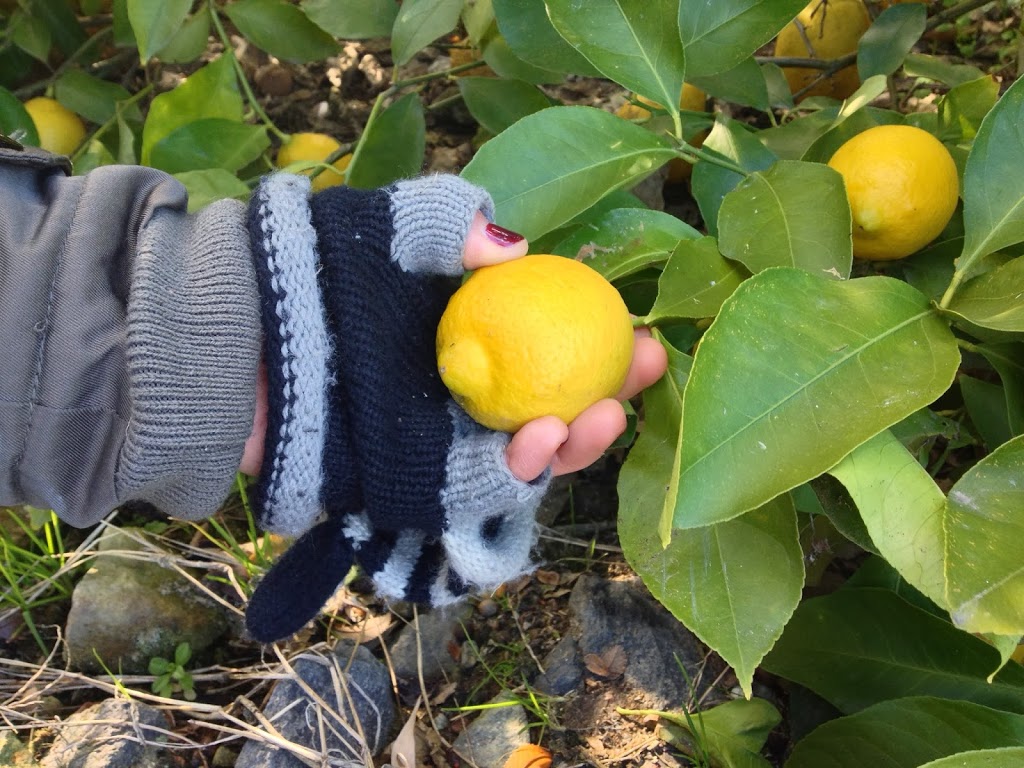 |
| For perspective, keep in mind that Hisachan’s hands are basically child-sized… |
We soon came to the top of an exceedingly large and steep hill. I asked Mikichan, “Do we go down?” No sooner had she said “Hai” than my feet were laying full into the pedals of my Rocketbike, even as I leaned forward to minimize aerodynamic drag.
Did I hear Mikichan calling to me to wait, or shouting at my rapidly receding back that the museum was actually right beside us?
Not a chance.
All I heard was the wind whistling in my ears, and the call of the open road.
I descended like a thunderbolt, the spikes upon my jacket shredding the air as my electric-assisted bicycle pedals spun out to their maximum acceleration. Still I raced down the hill, hugging the insides of the turns, my ears popping from the rapidity of the descent.
I of course have no way to know exactly what speed I achieved during this overclocked career, yet I am sure that it is the fastest I have ever gone on a bicycle. In fact, whatever the speed limit is for that road, I probably doubled or tripled it.
Between the smoothness of the pavement and the gentleness of the turns, I was able to blaze down the declension without so much as once applying the bicycle’s (probably entirely inadequate under the circumstances) rim brakes. In short, my descent was reckless, brisk, and glorious.
Tearing into a straightaway near the bottom of the hill, I noticed a shrine on my left. Conscious that Mikichan and Hisachan would be less inclined to ride like Thunderdome (and of course not wanting to miss an opportunity to thank the gods who resided near the hill for having left it in such convenient proximity to an electric bike rental facility), I applied the rim brakes, and probably more or less burnt them up entirely coming to a stop some fifty or sixty feet past the shrine entrance.
In fact, after this I noticed that my brakes performed noticeably shittier for the duration of my ride.
I call it a win.
Of course after several minutes had passed, Mikichan and Hisachan eventually arrived to inform me that the museum was at the top of the hill, and that I was a crazy, spikey, speedy maniac who should probably not be entrusted with an electric bicycle.
However, rather than break with tradition, we decided to explore the shrine before climbing back up the hill.
Unfortunately the shrine was not dedicated to the kamis of Hauling-Ass, Hell-On-Wheels, and Burning-Rubber as I had hoped, but rather to the three gods of the sea.
They’re pretty chill deities, though, so I thanked them for the hill anyway. I figure they can pass that part of my praise along to whichever kami is responsible for willfully disobeying the speed limit on a rental bicycle.
They’ve got gods for everything in Japan, so one of them is bound to get the message.
Interestingly enough, the shrine was under repair, and partially ruinous, but still quite beautiful—perhaps more so from its rusticated character.
The old gargoyles looked way more intimidating than the new ones.
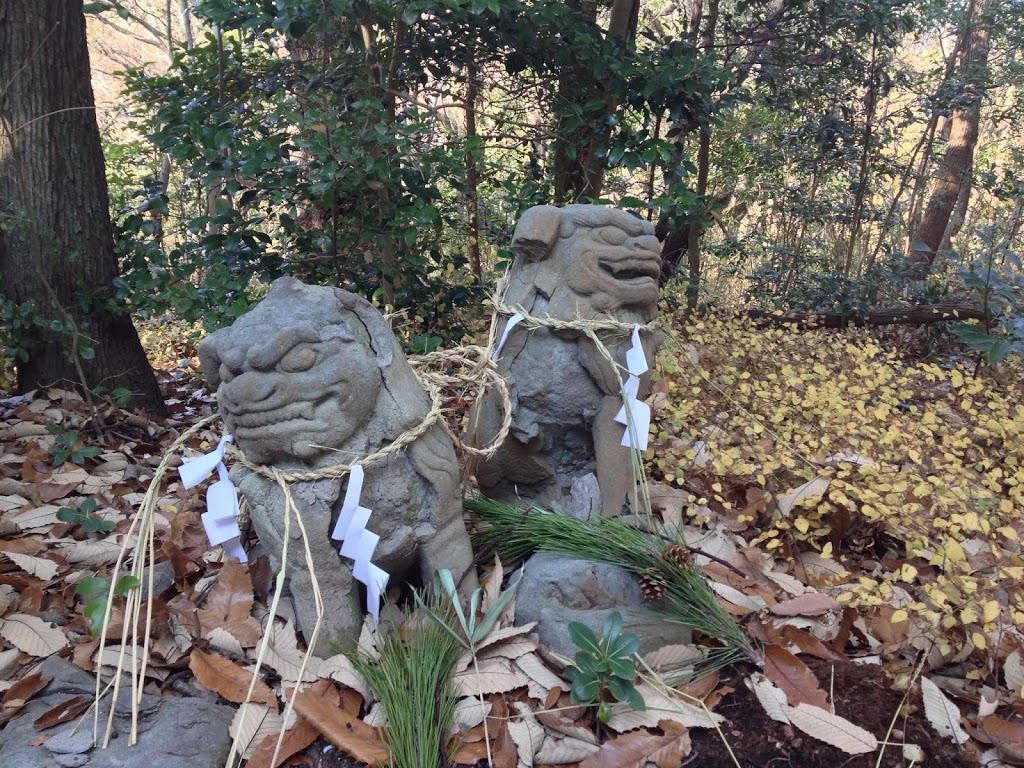 |
| These dudes look so tough! If I had a shrine, I would definitely want them to guard it. |
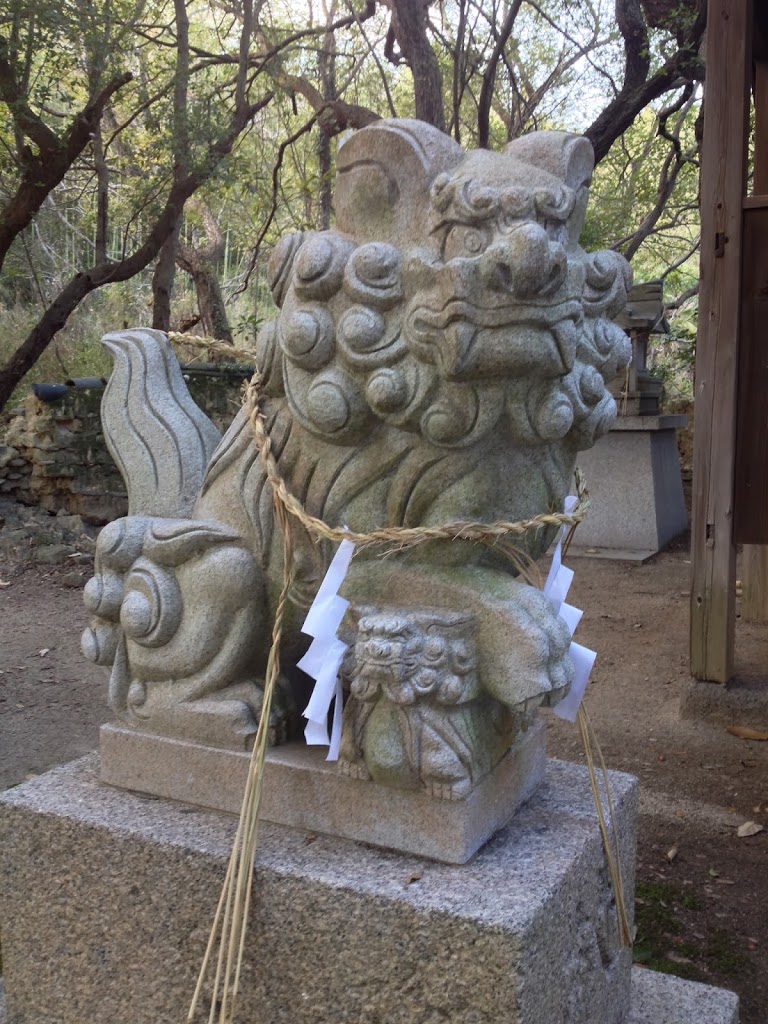 |
| One of the new ones had a baby guardian too! |
Three devotional houses, one for each of the three sea gods (apparently three dragons, each governing the top, middle, and bottom portions of the ocean respectively).
After our devotionals, we returned to our bikes.
Appropriately enough, the shrine stands within view of the sea. But I guess on a small island, most everything does…
We climbed back up the enormous hill—thankful for our electric-assisted bicycles—and at length perched upon a bench overlooking the sea.
We broke out our bento, and ate amidst the smell of ocean breezes and the now fading, now flowing rays of dappled winter sunlight.
The stepped hill beneath us, apparently an ancient Japanese farming technique, provided the perfect backdrop for our lunch.
Upon finishing, we betook ourselves to the museum—yet nothing could have prepared me for what we found inside.
…To be continued.

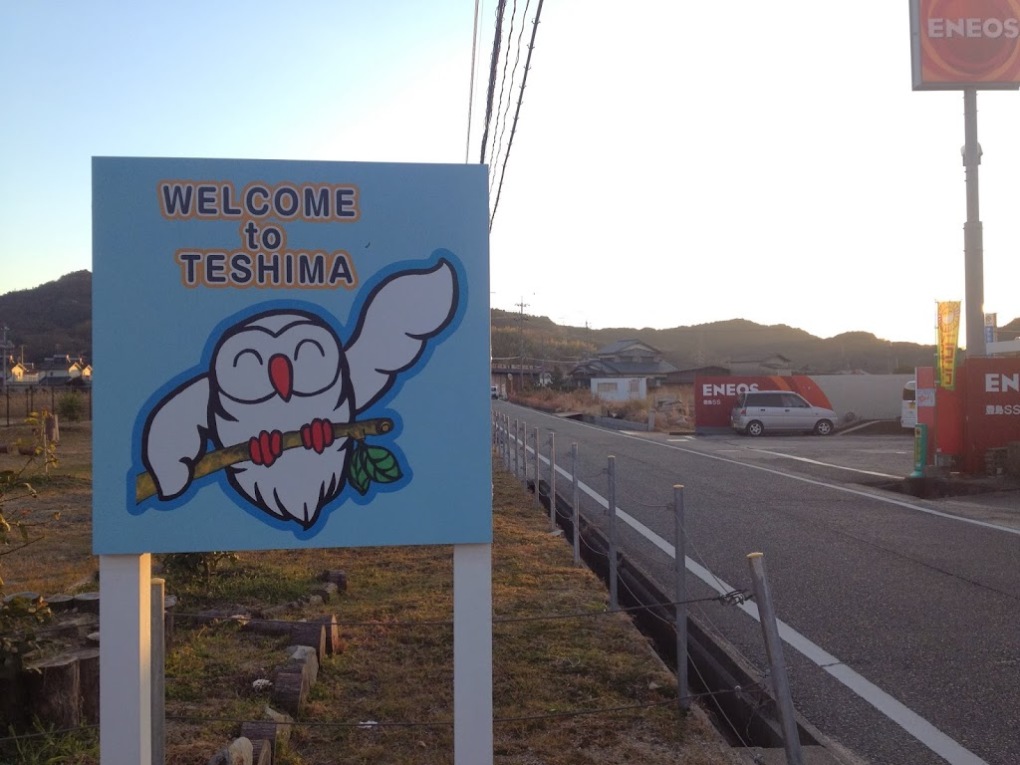
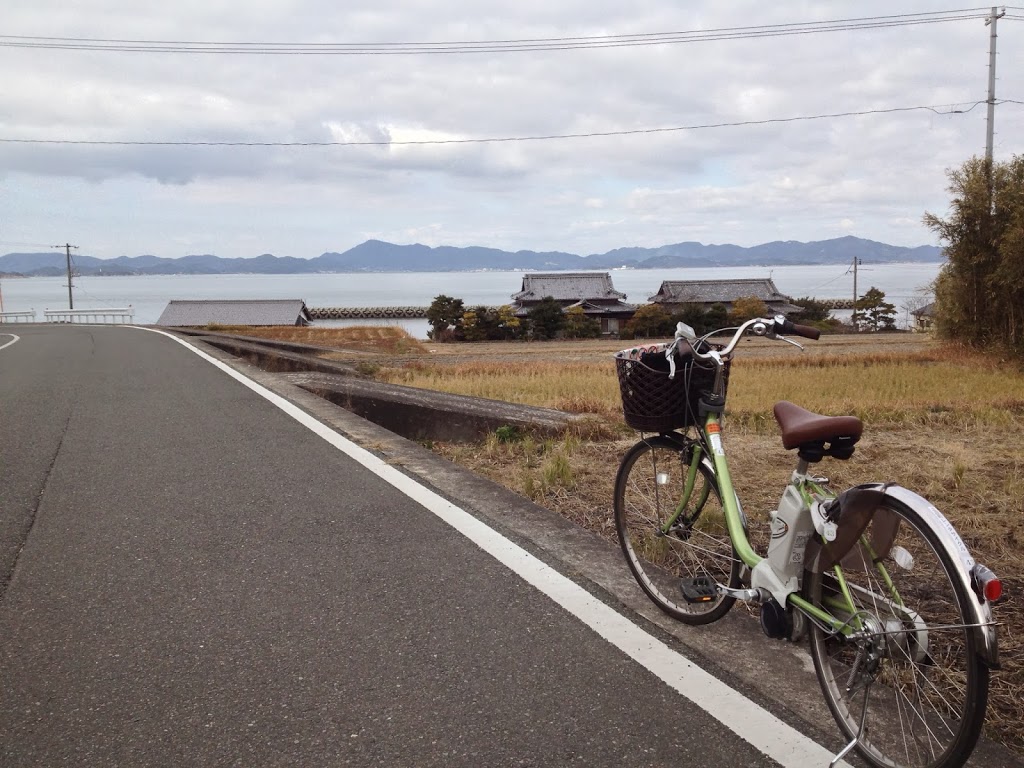



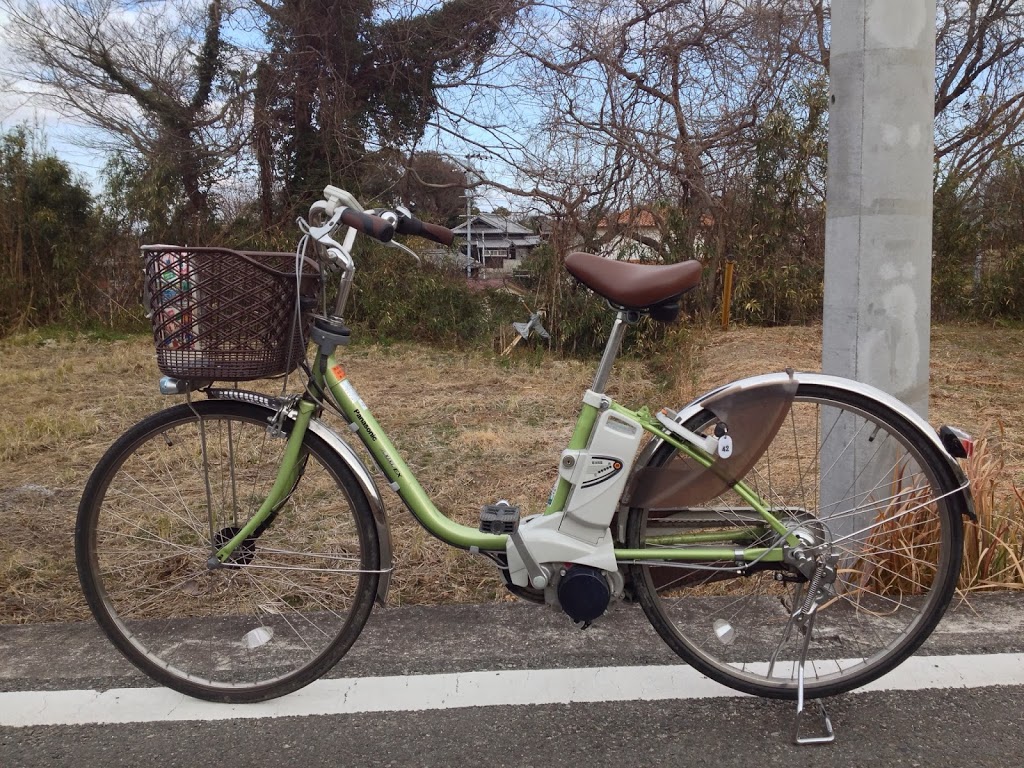

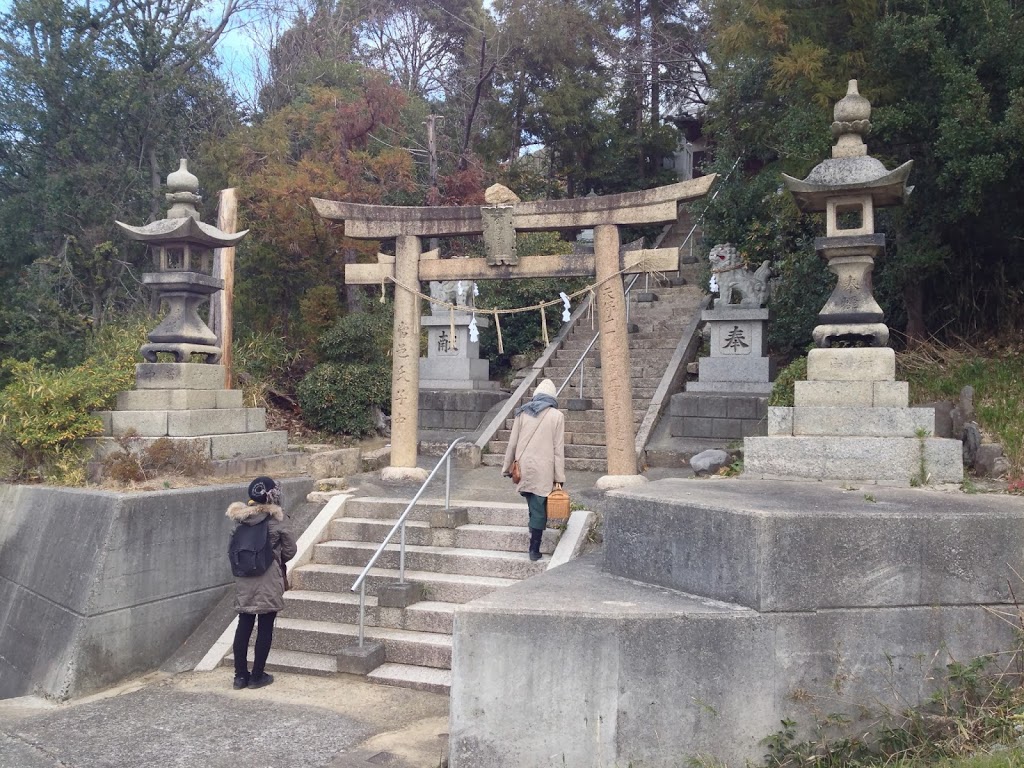
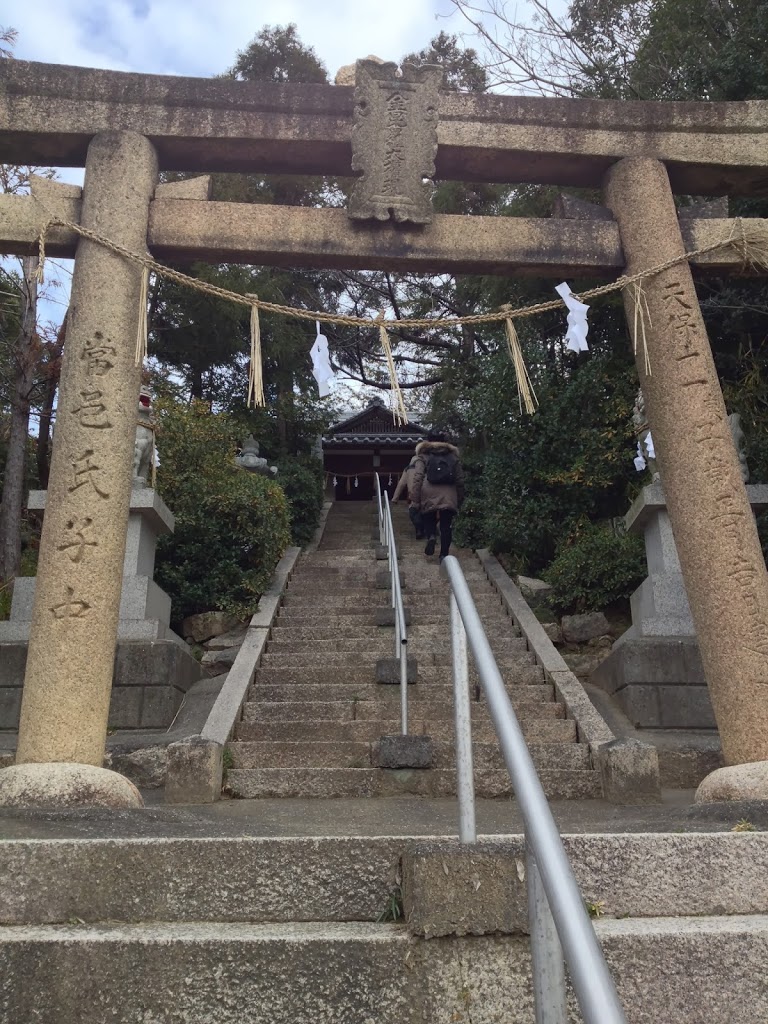
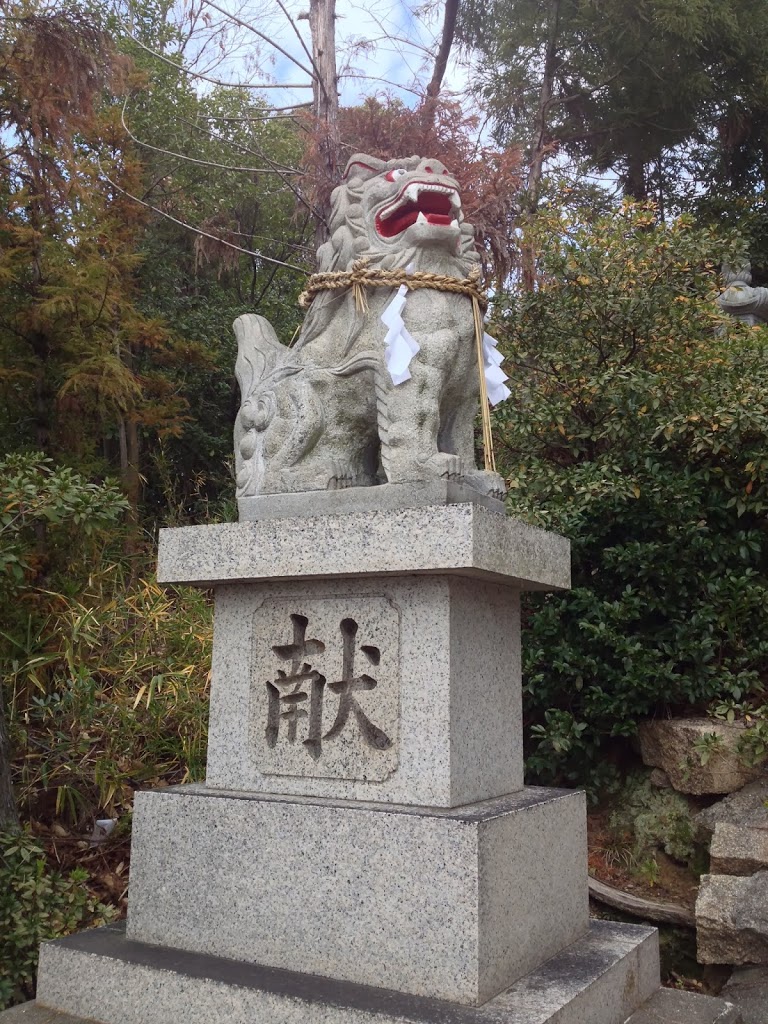
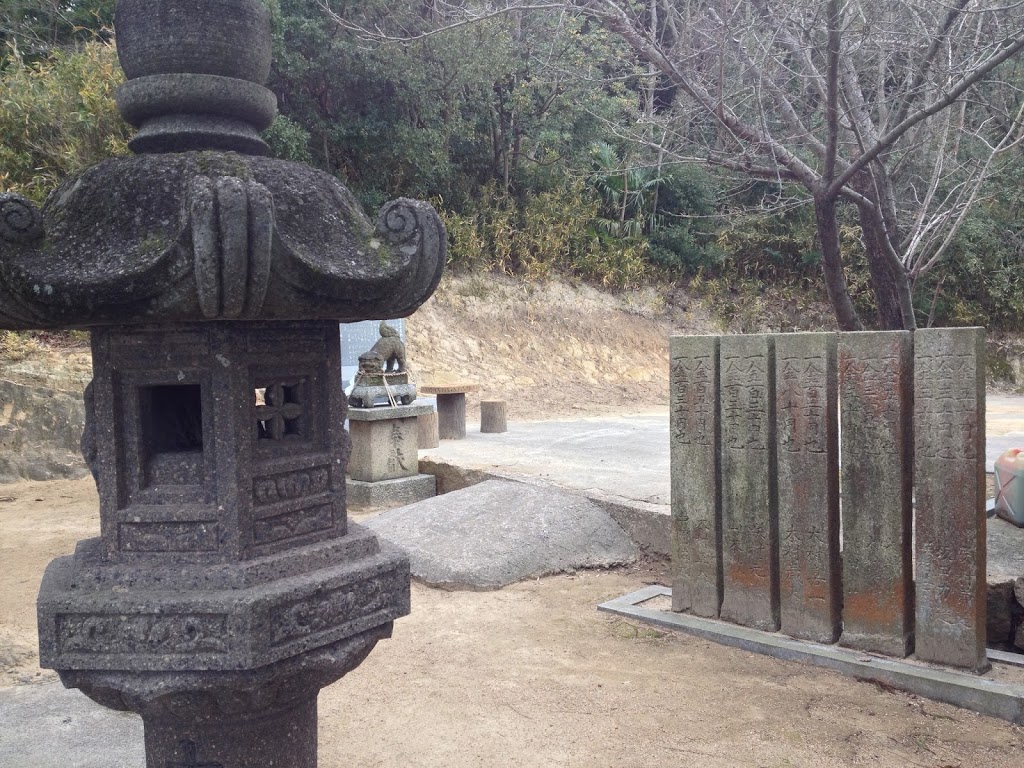

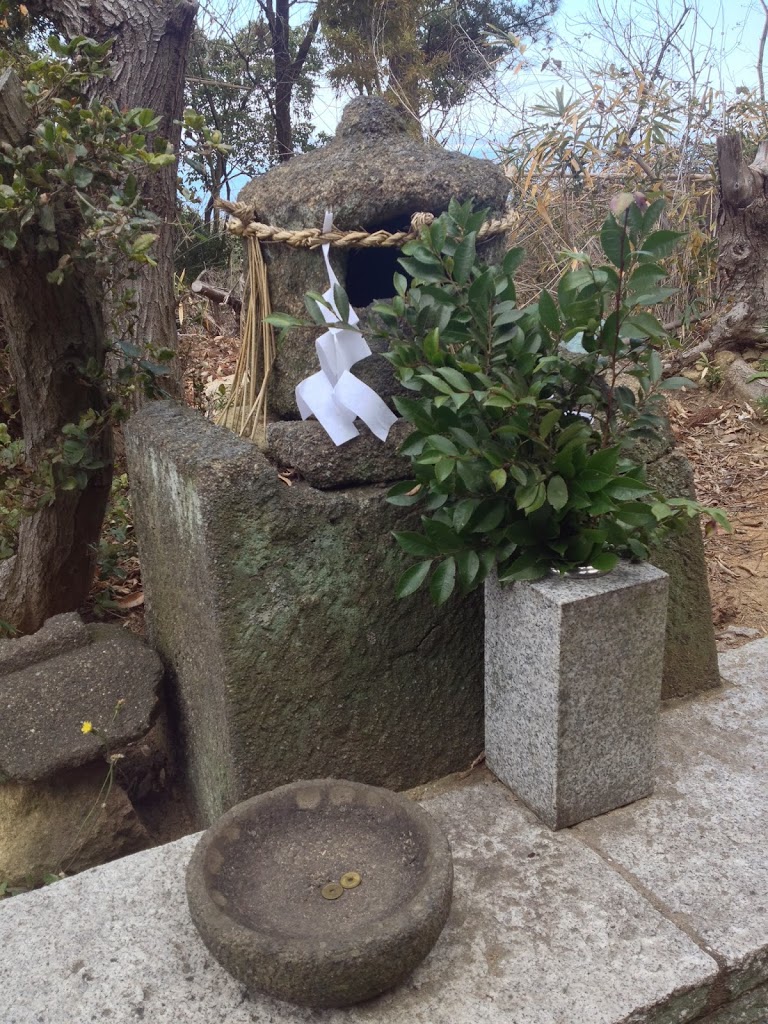
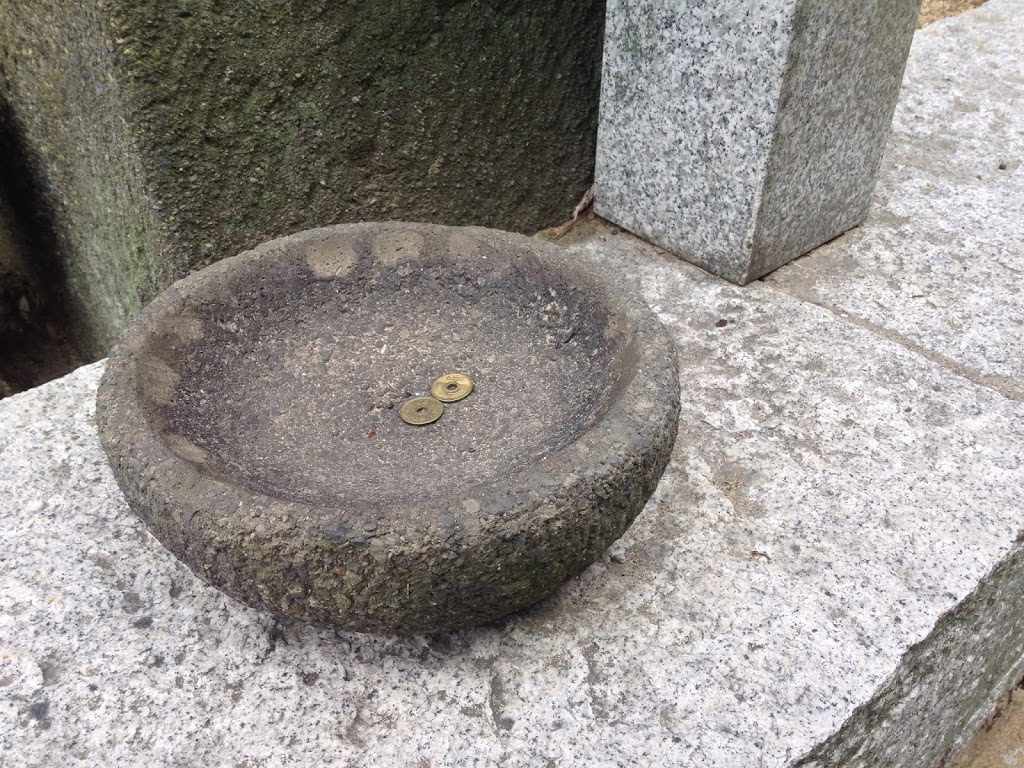
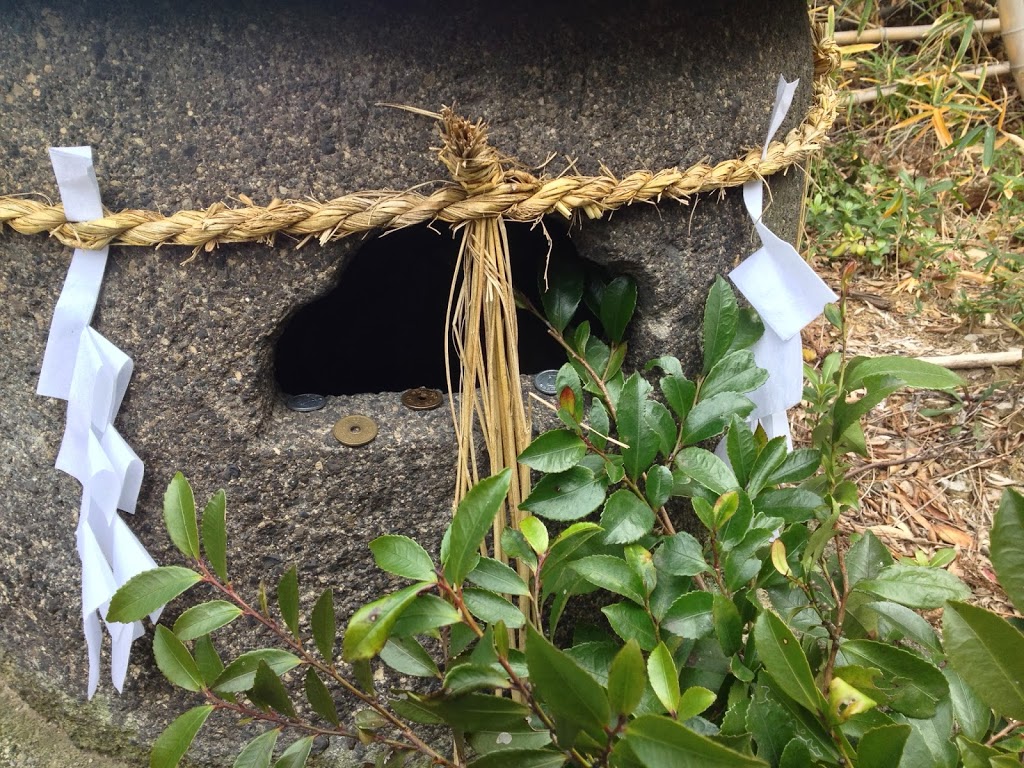
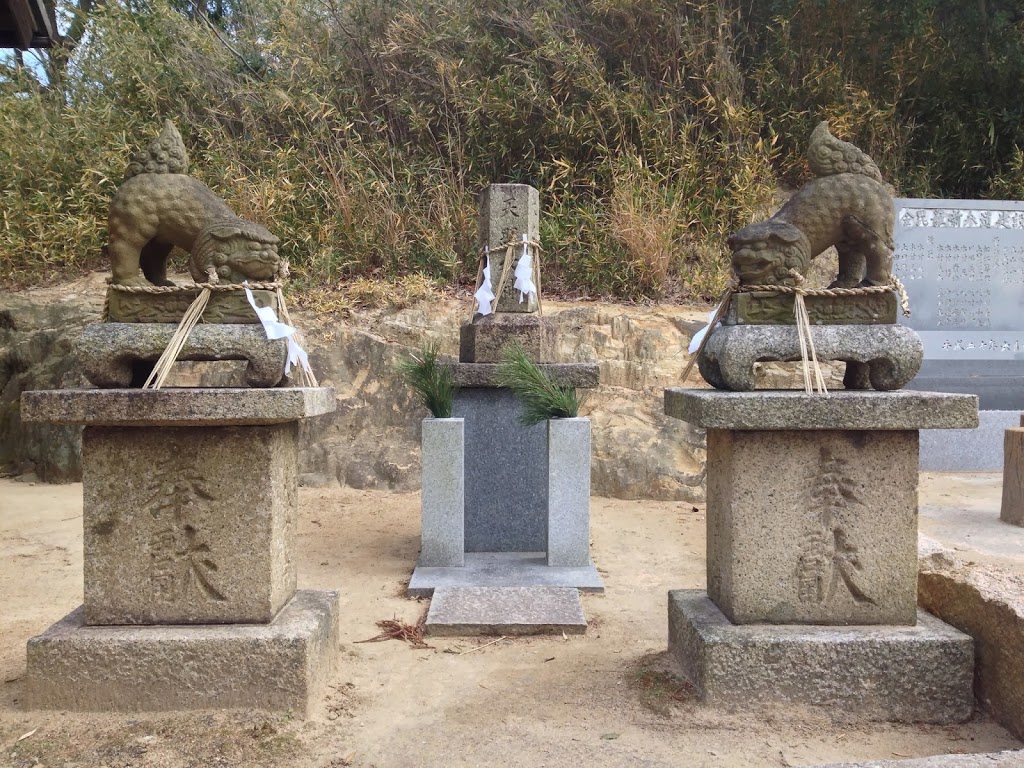
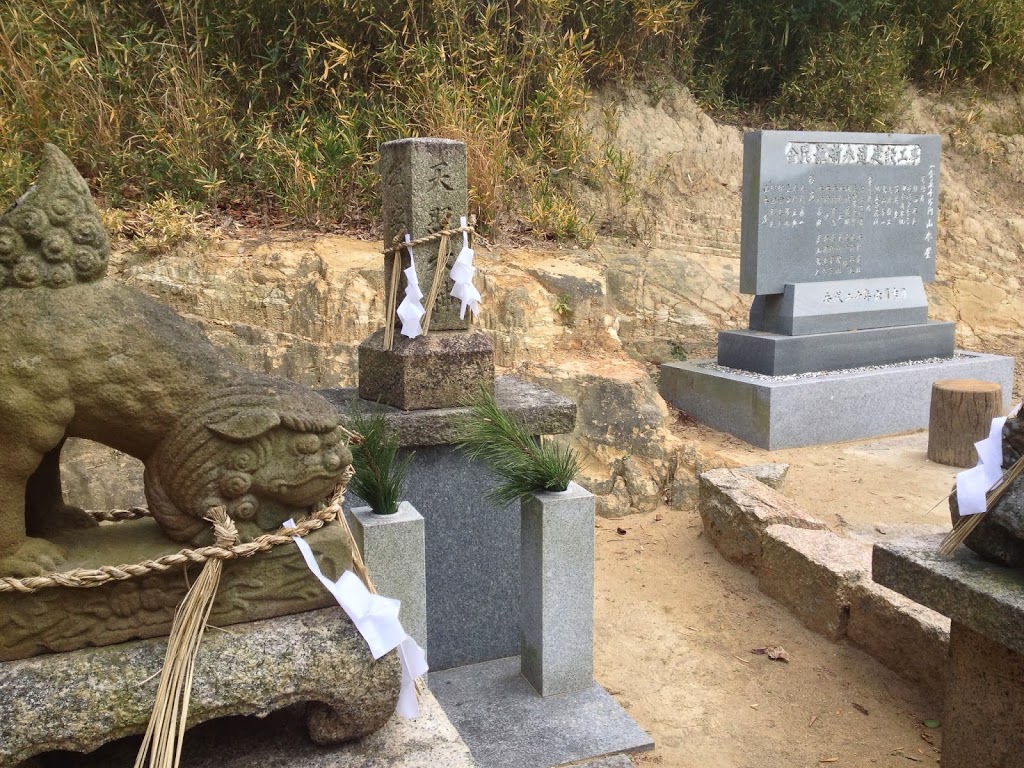

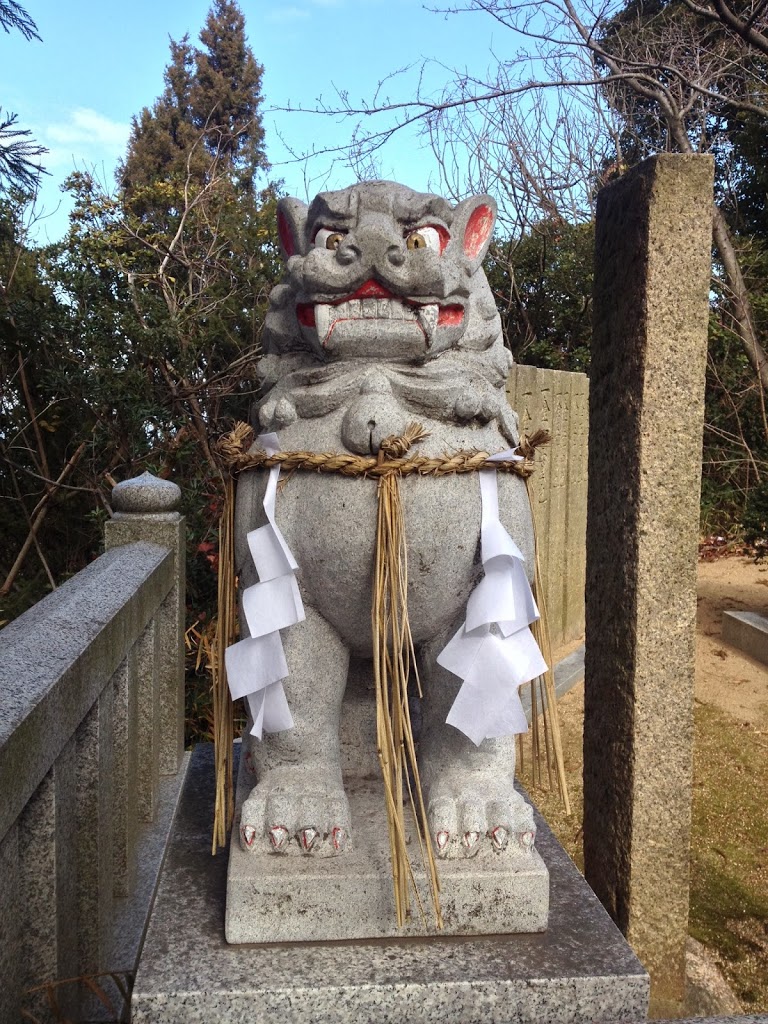
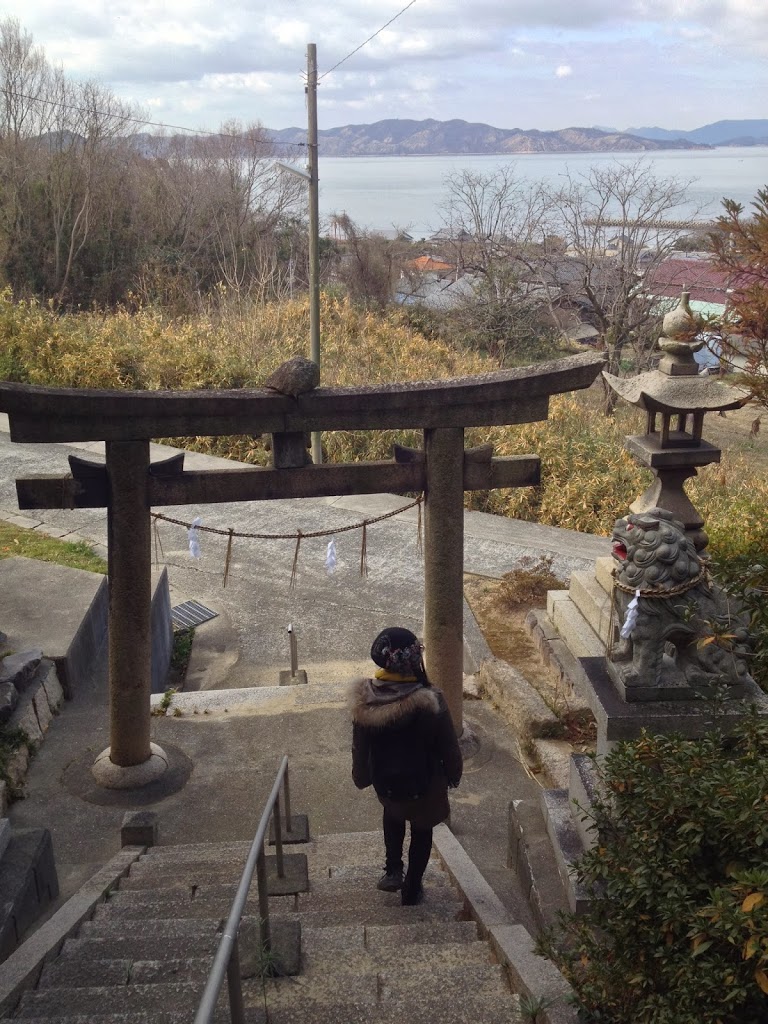
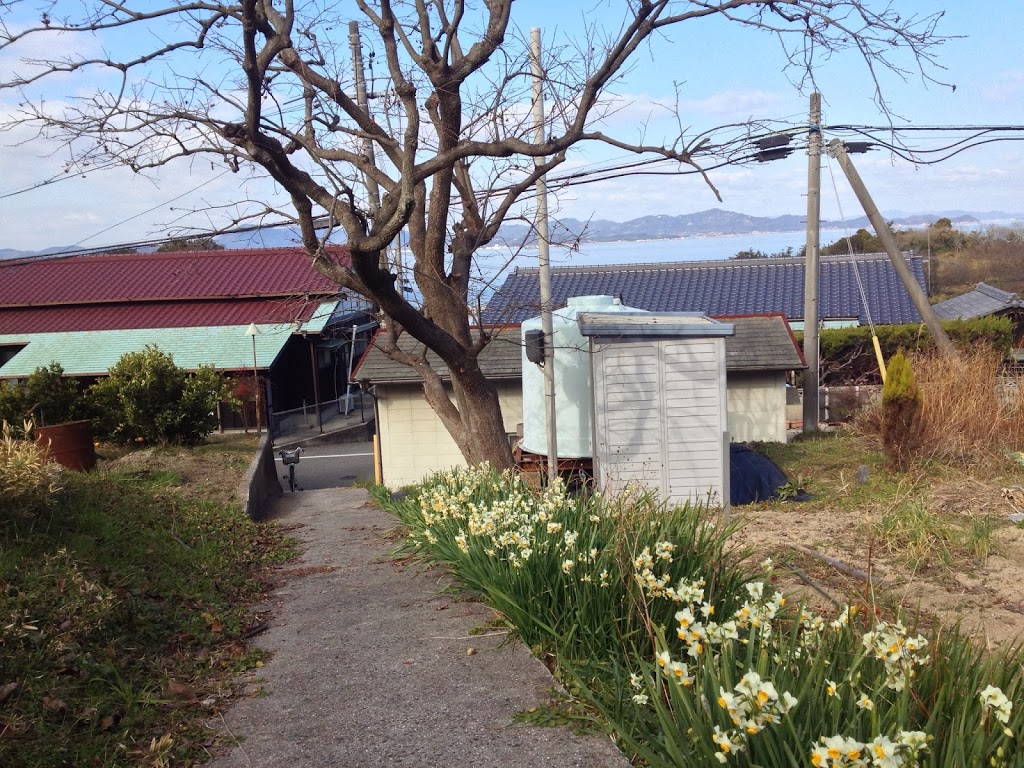
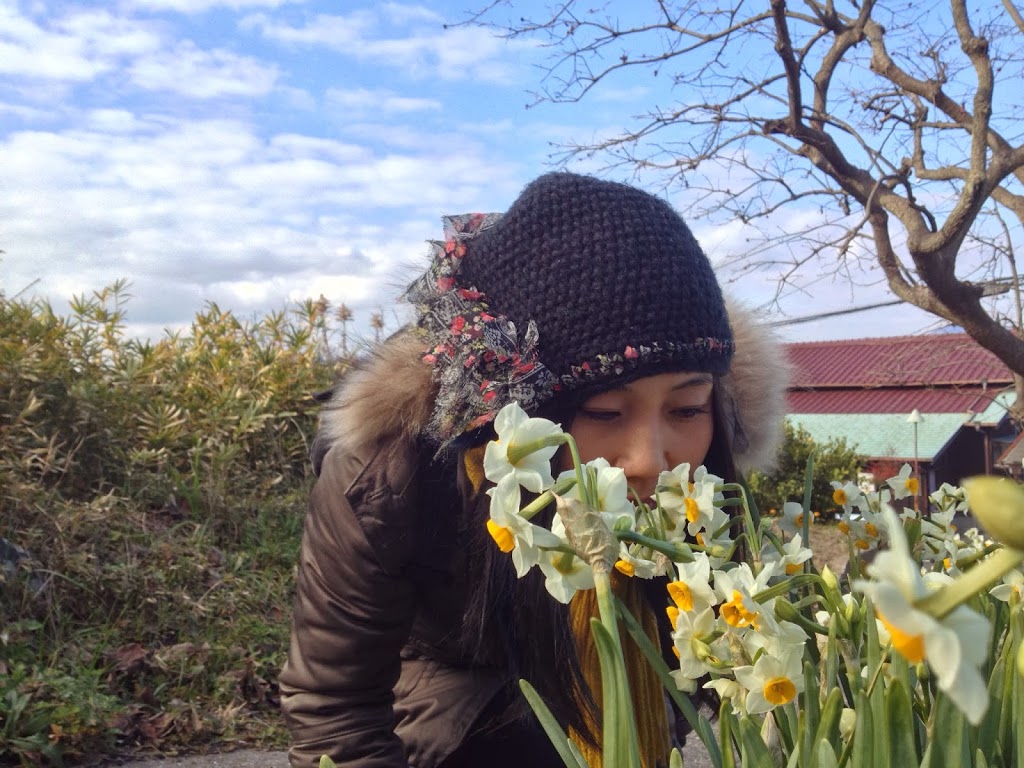
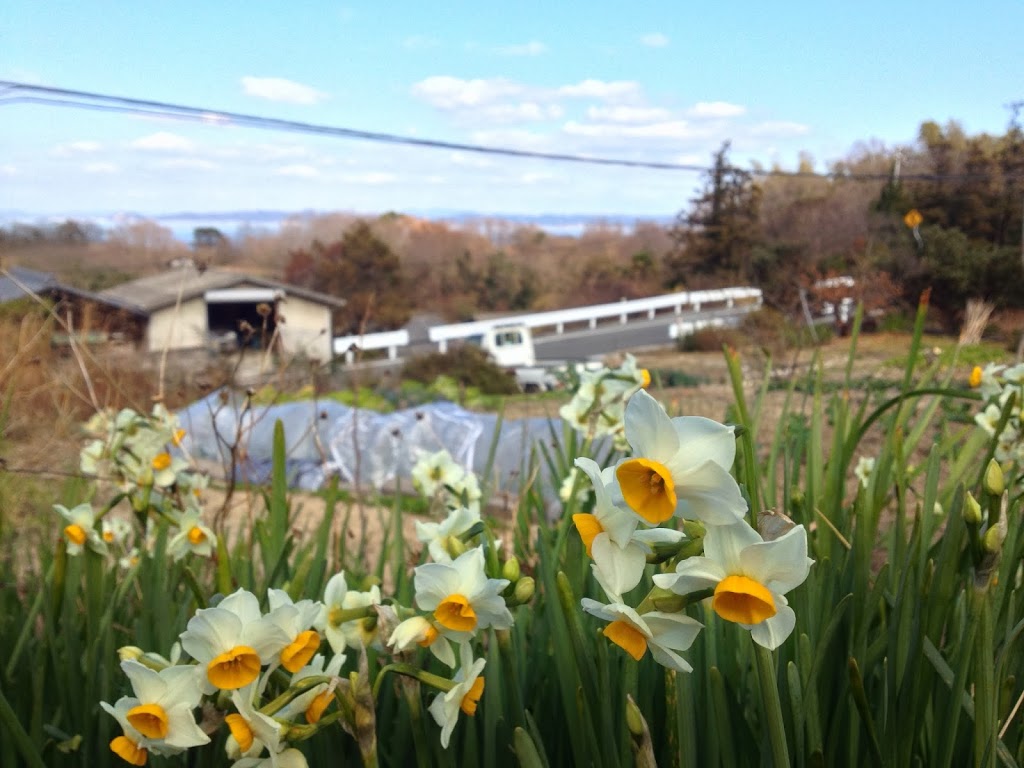

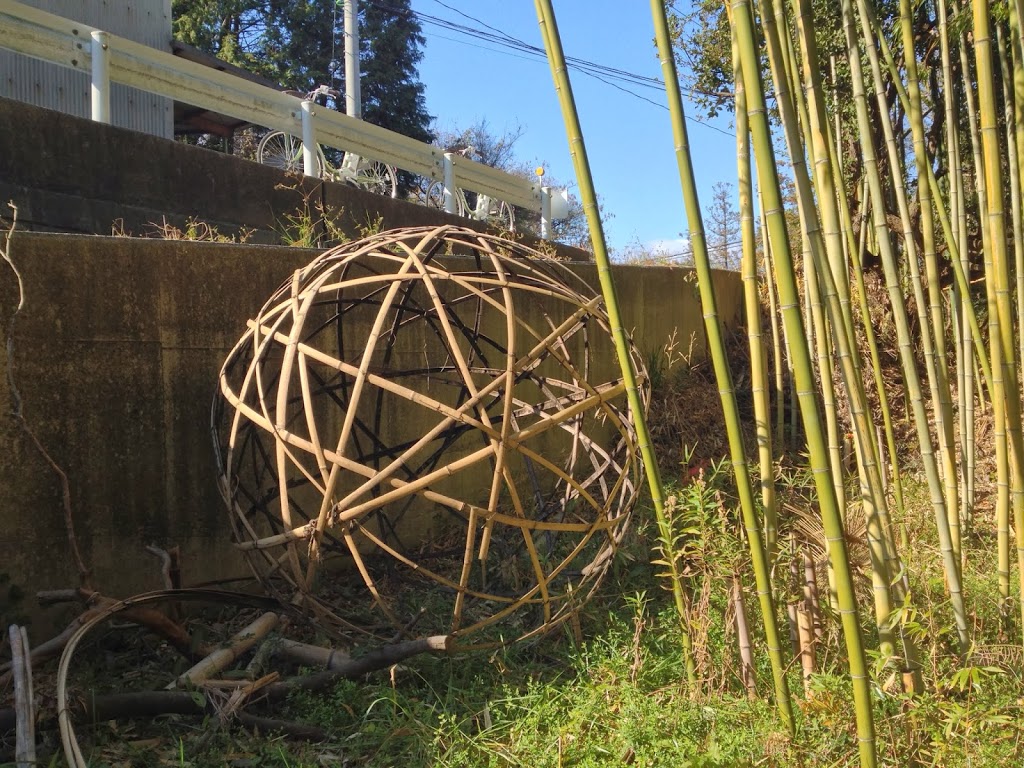

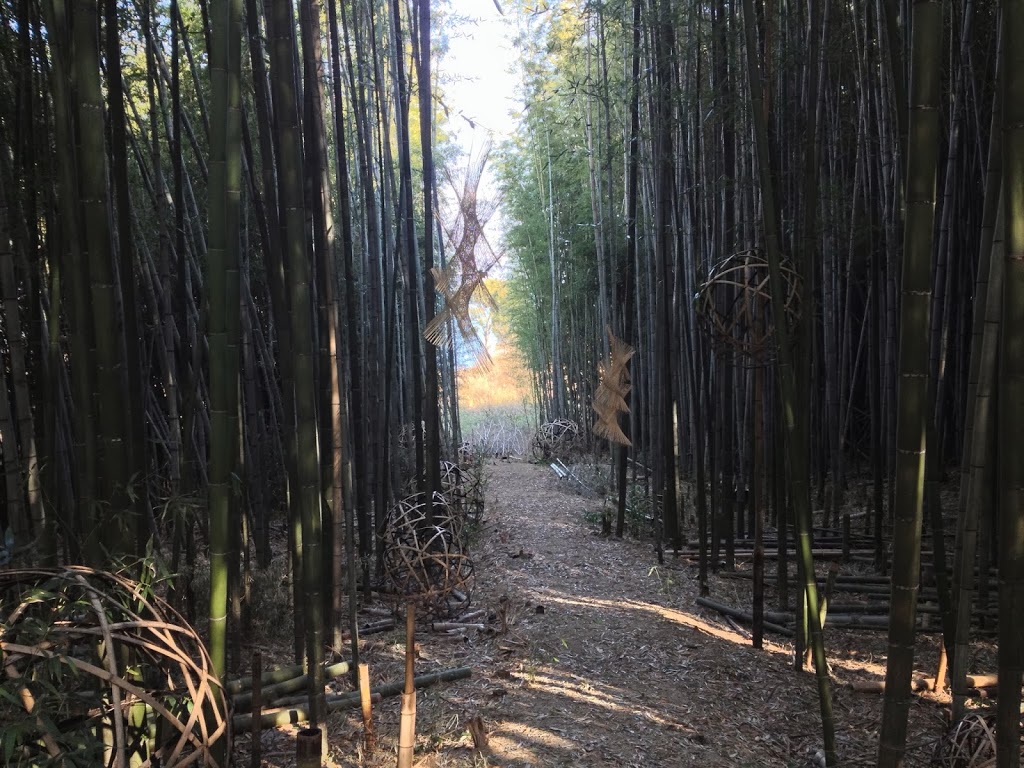

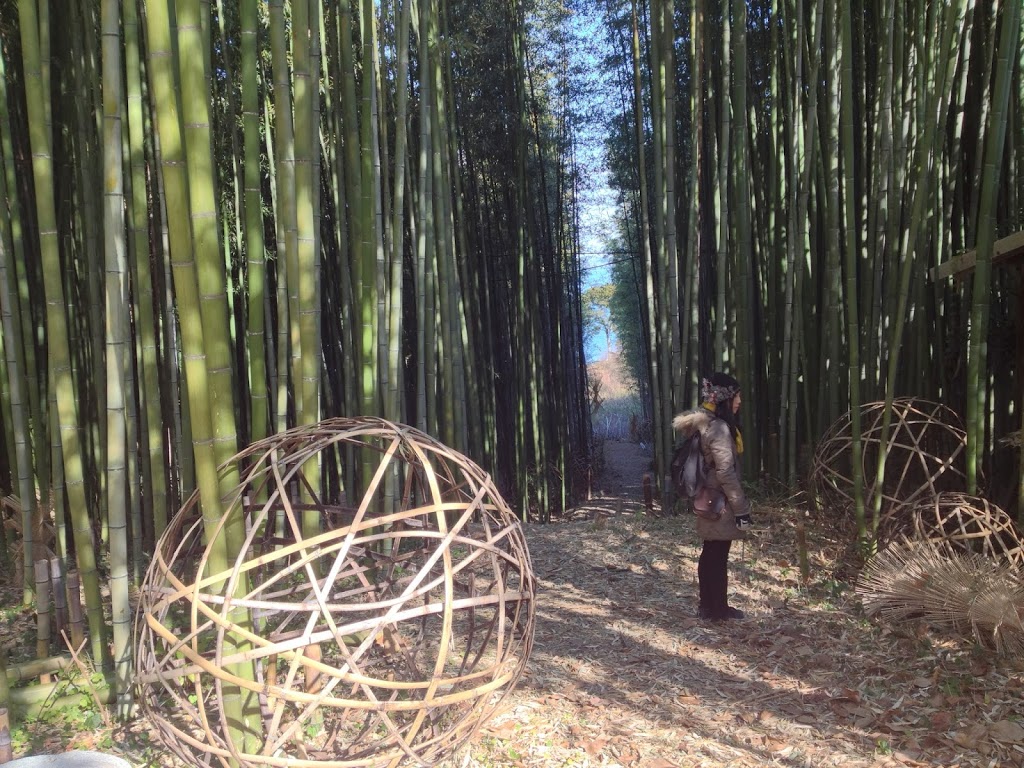
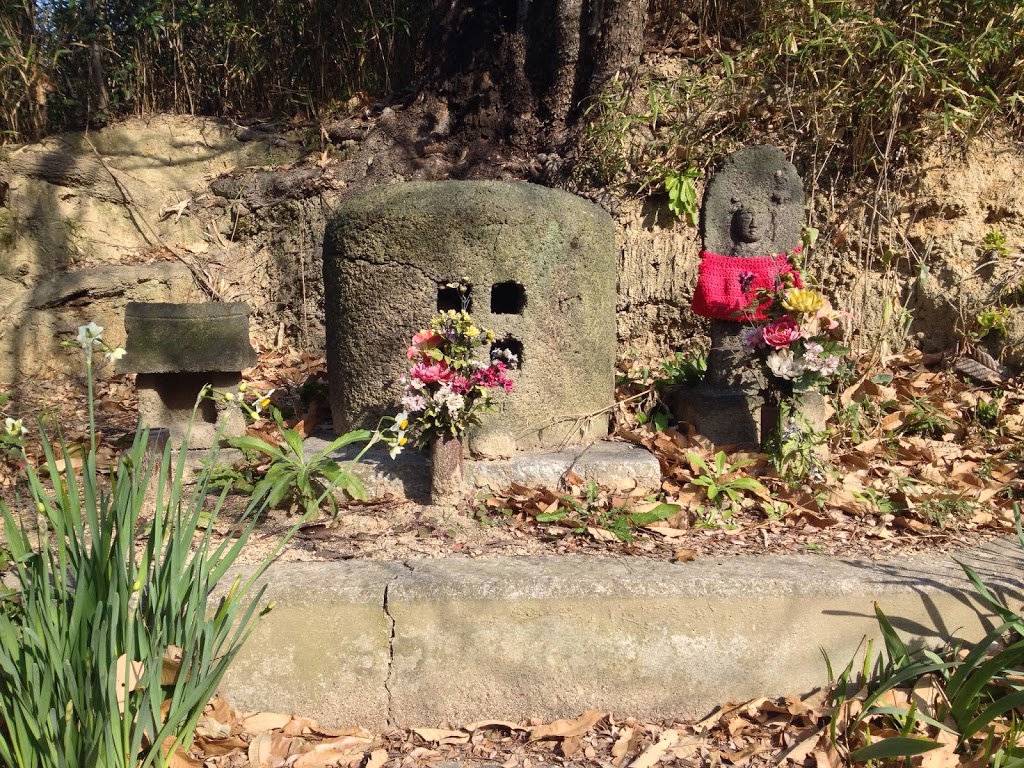

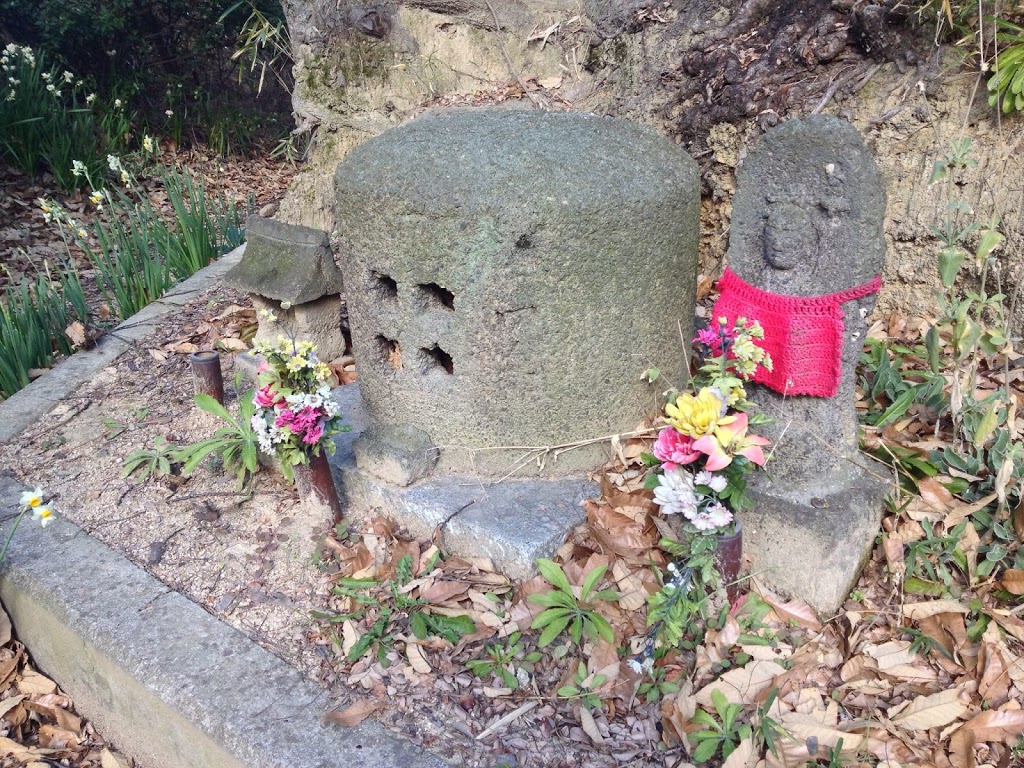



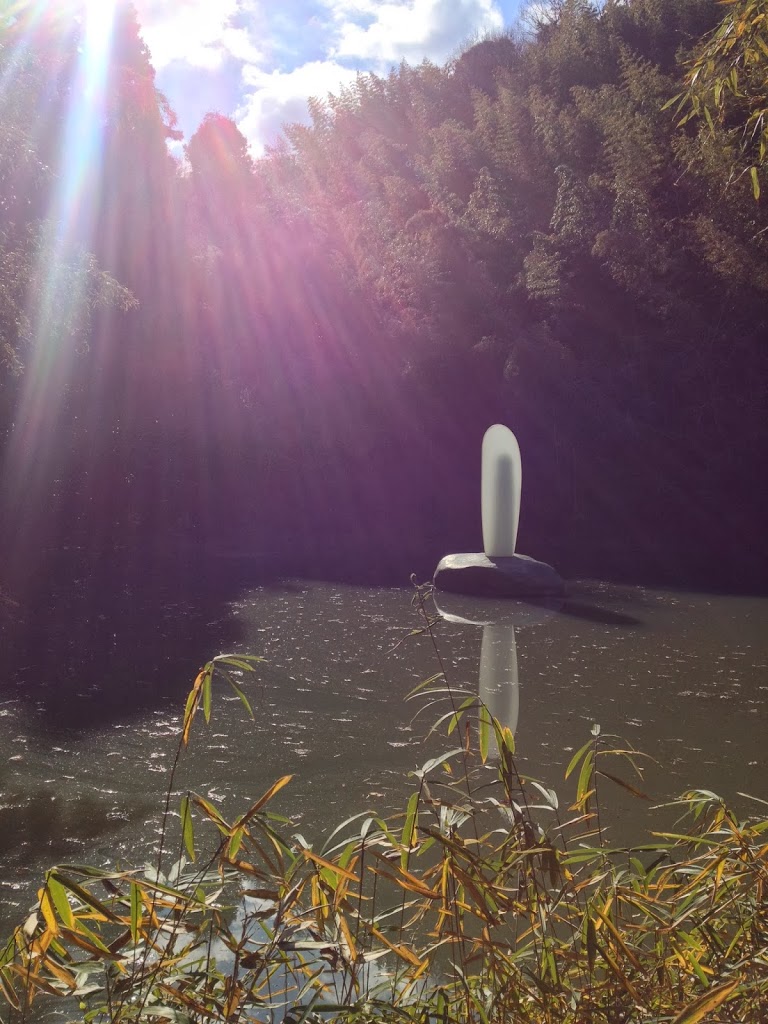

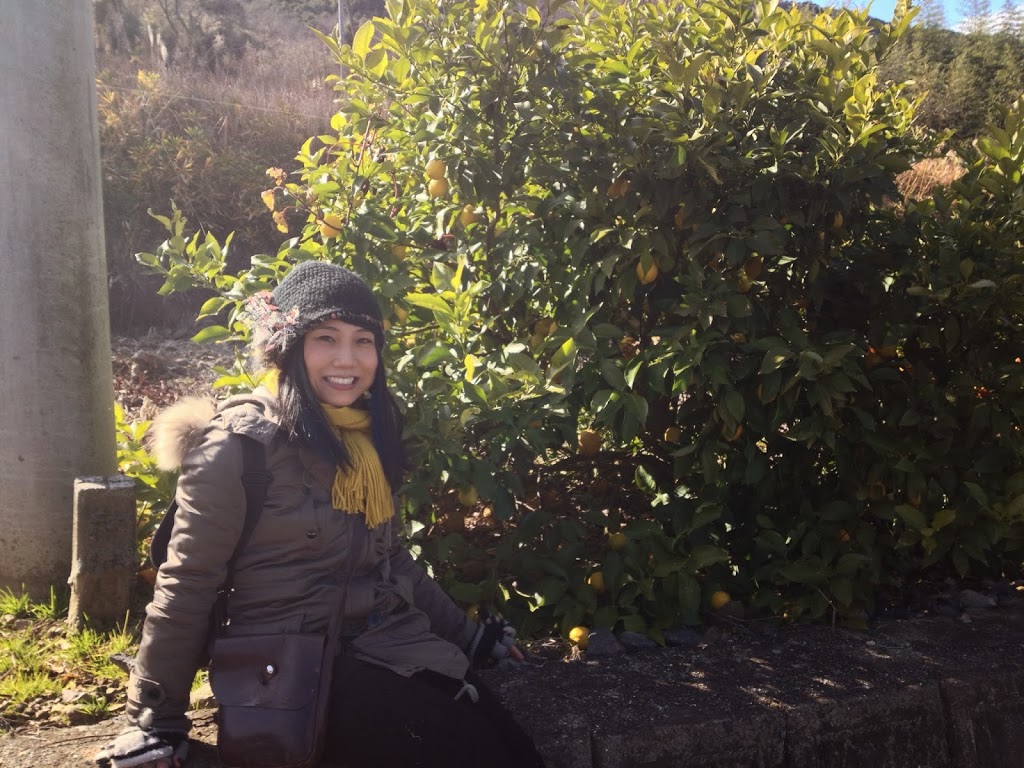
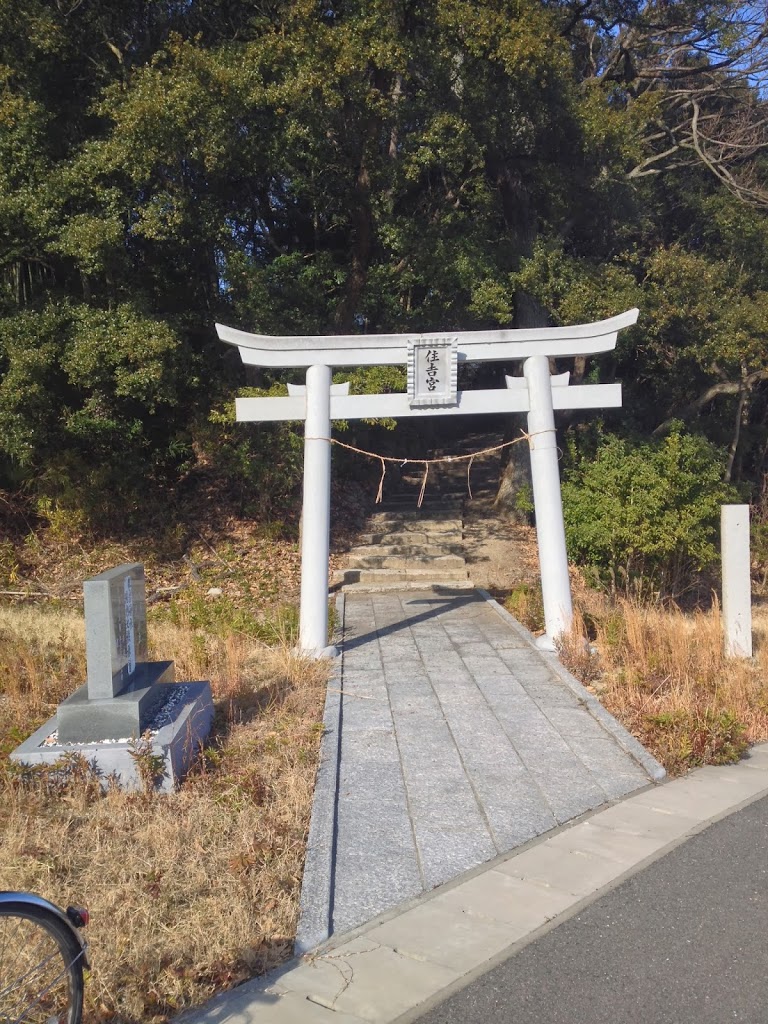

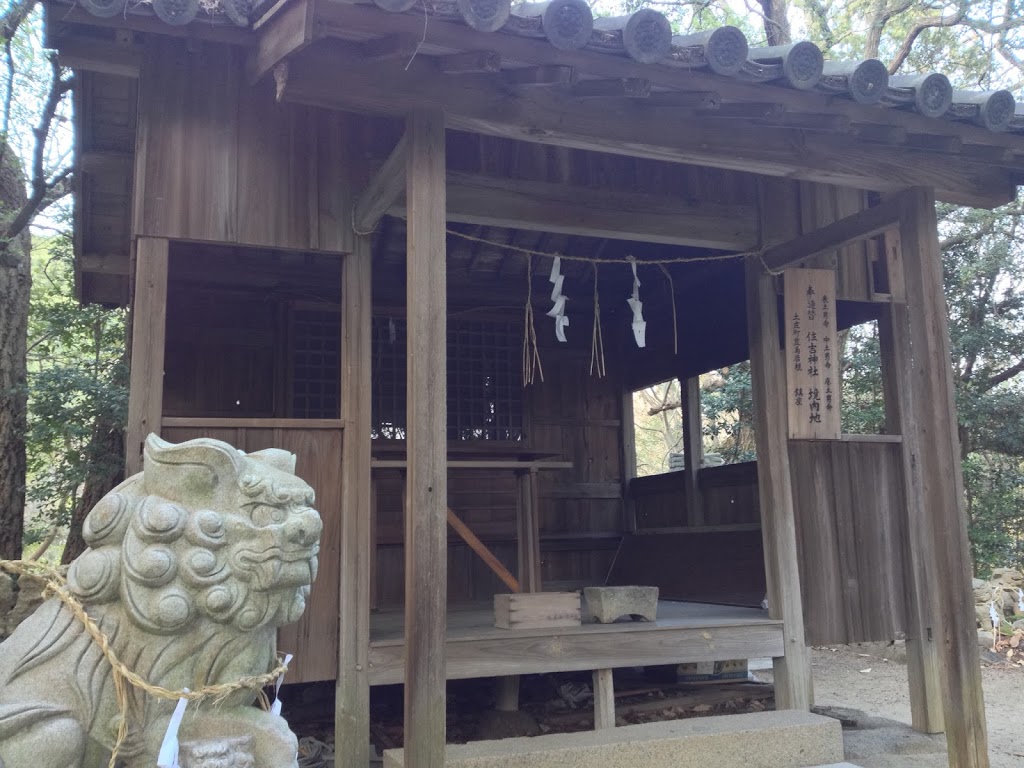


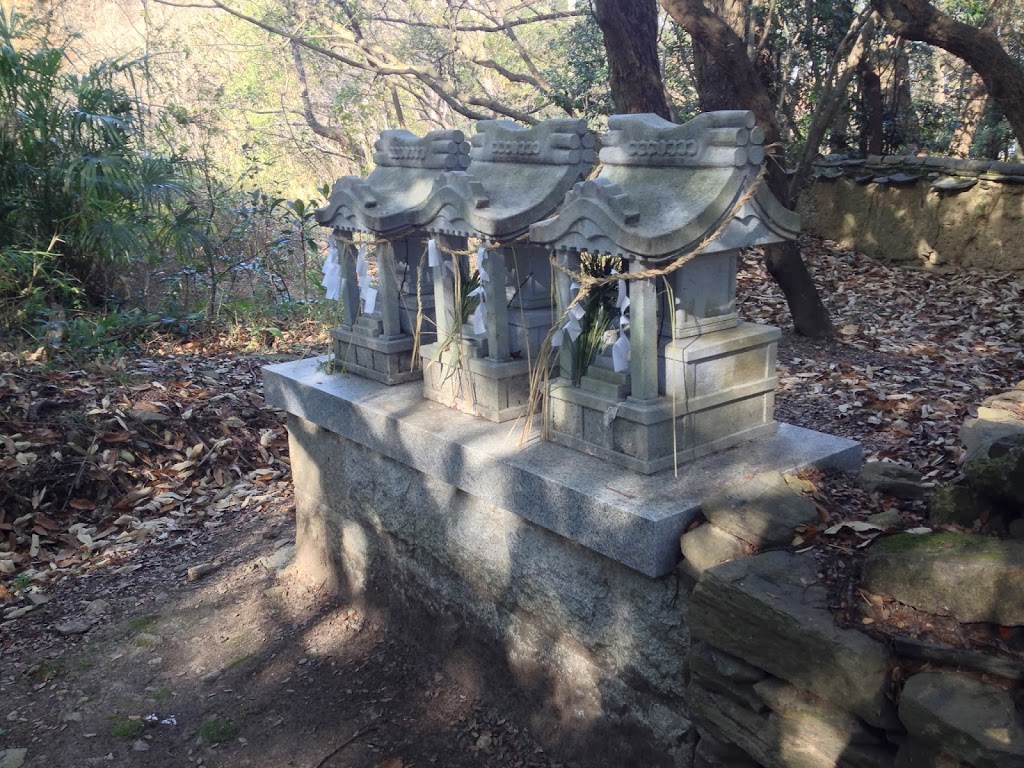
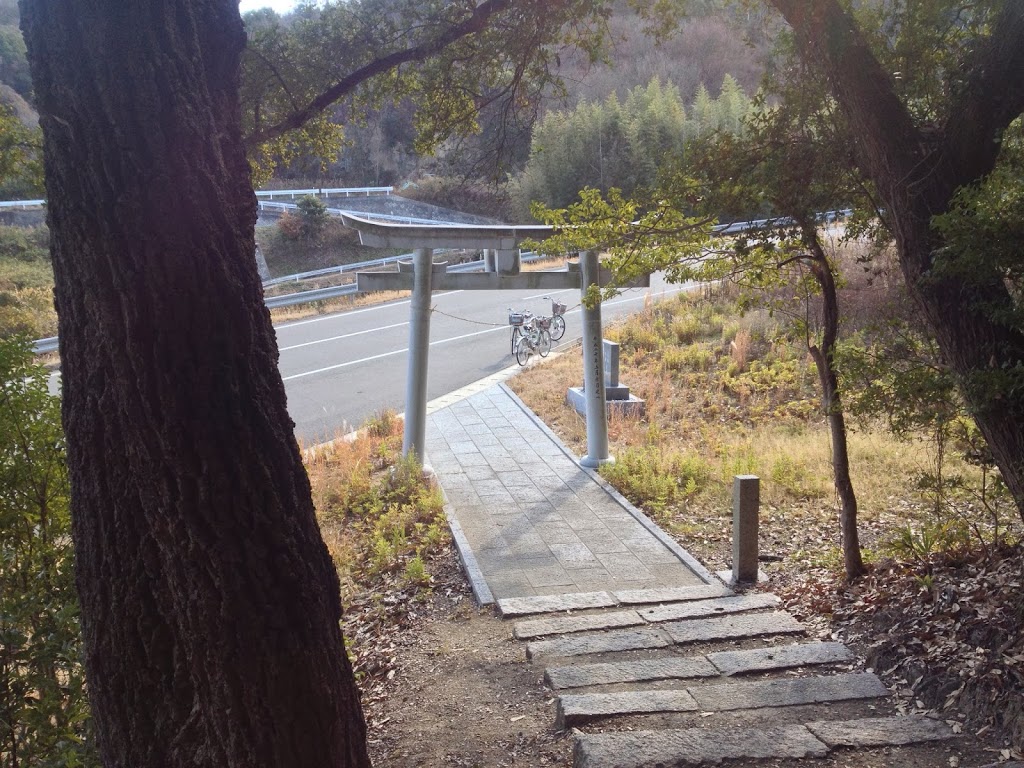
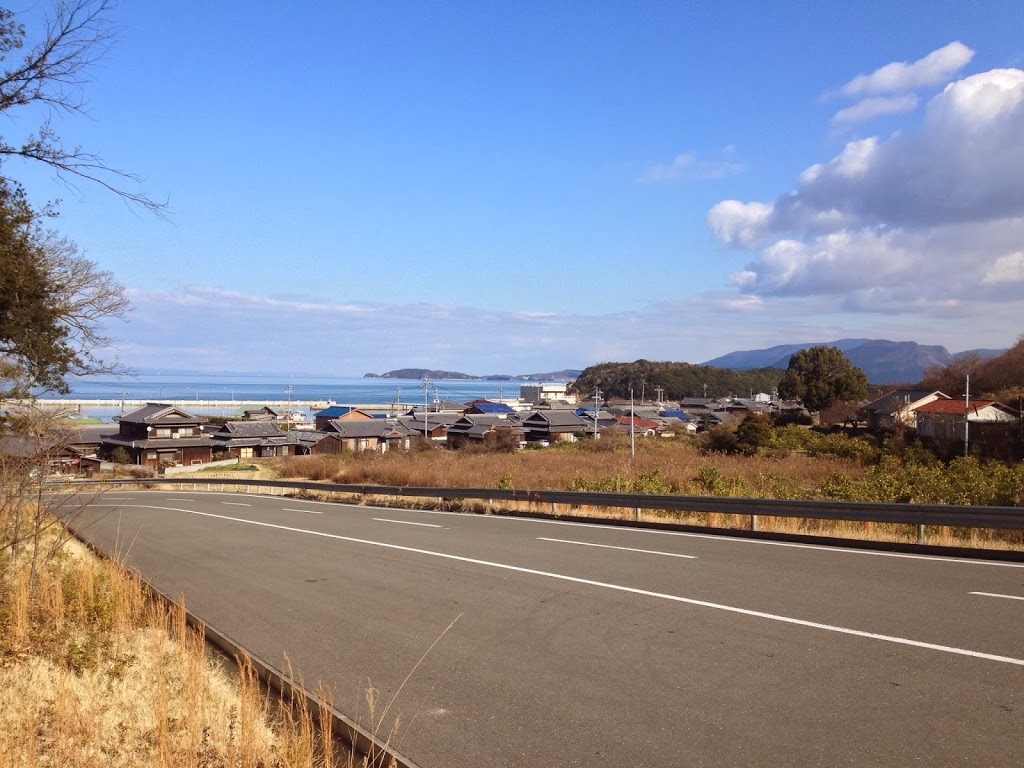

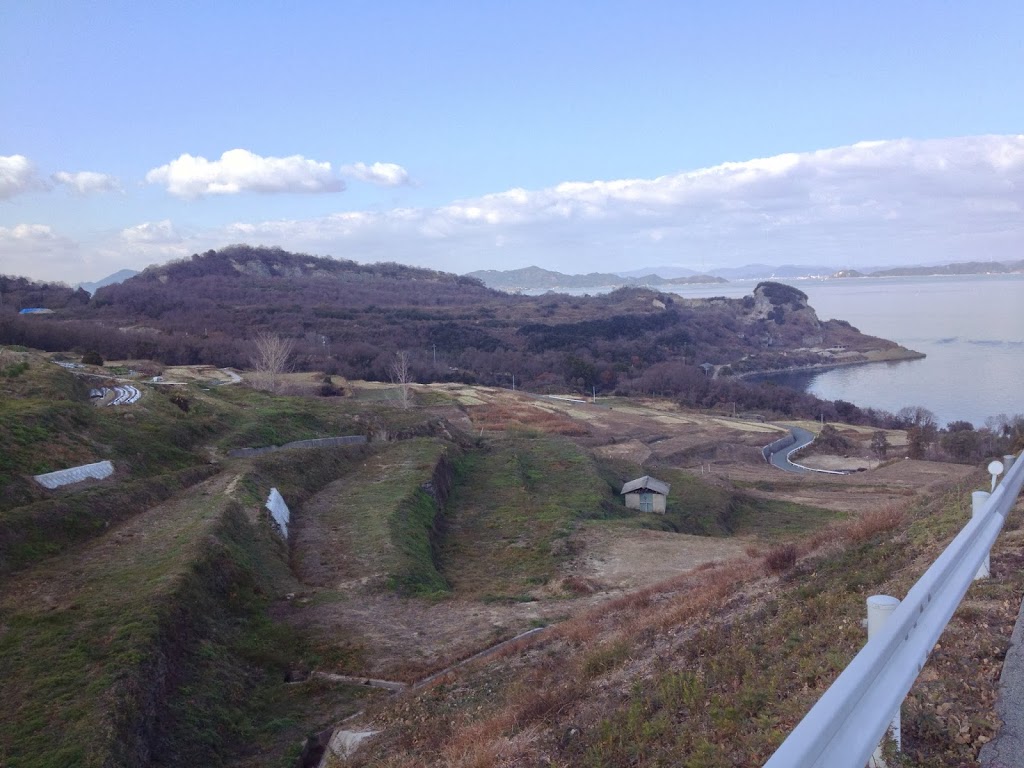
0 comments on “Rocketbike” Add yours →